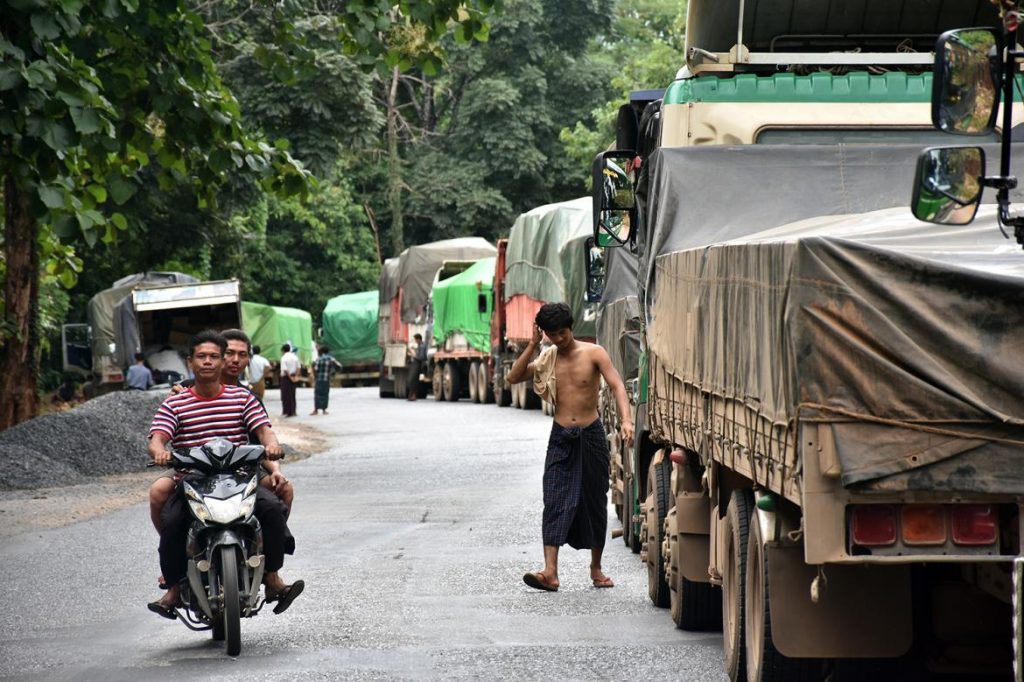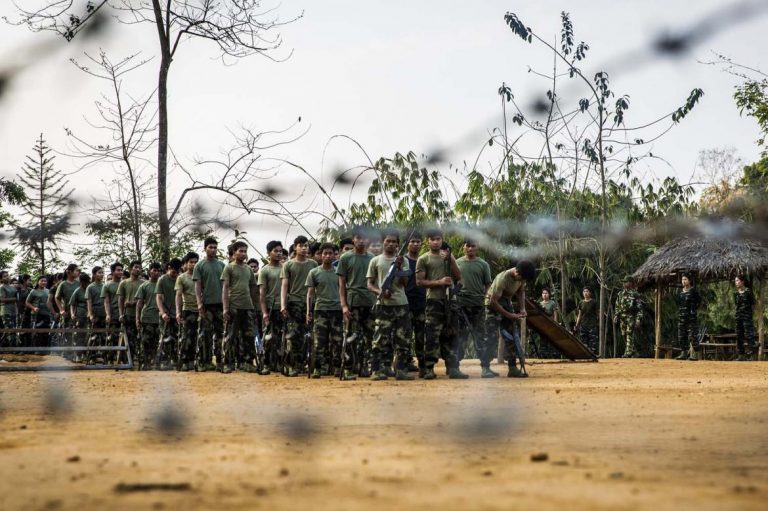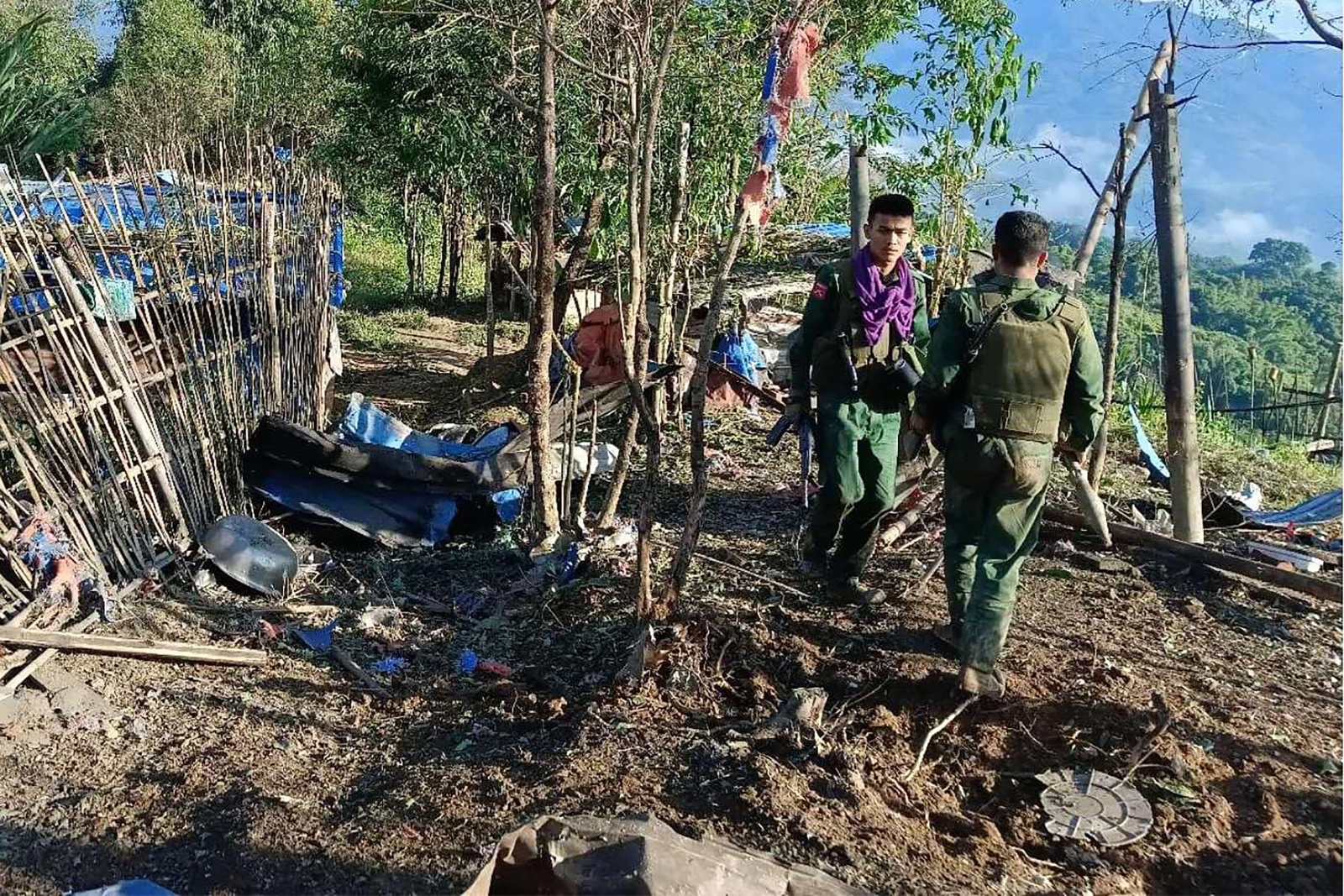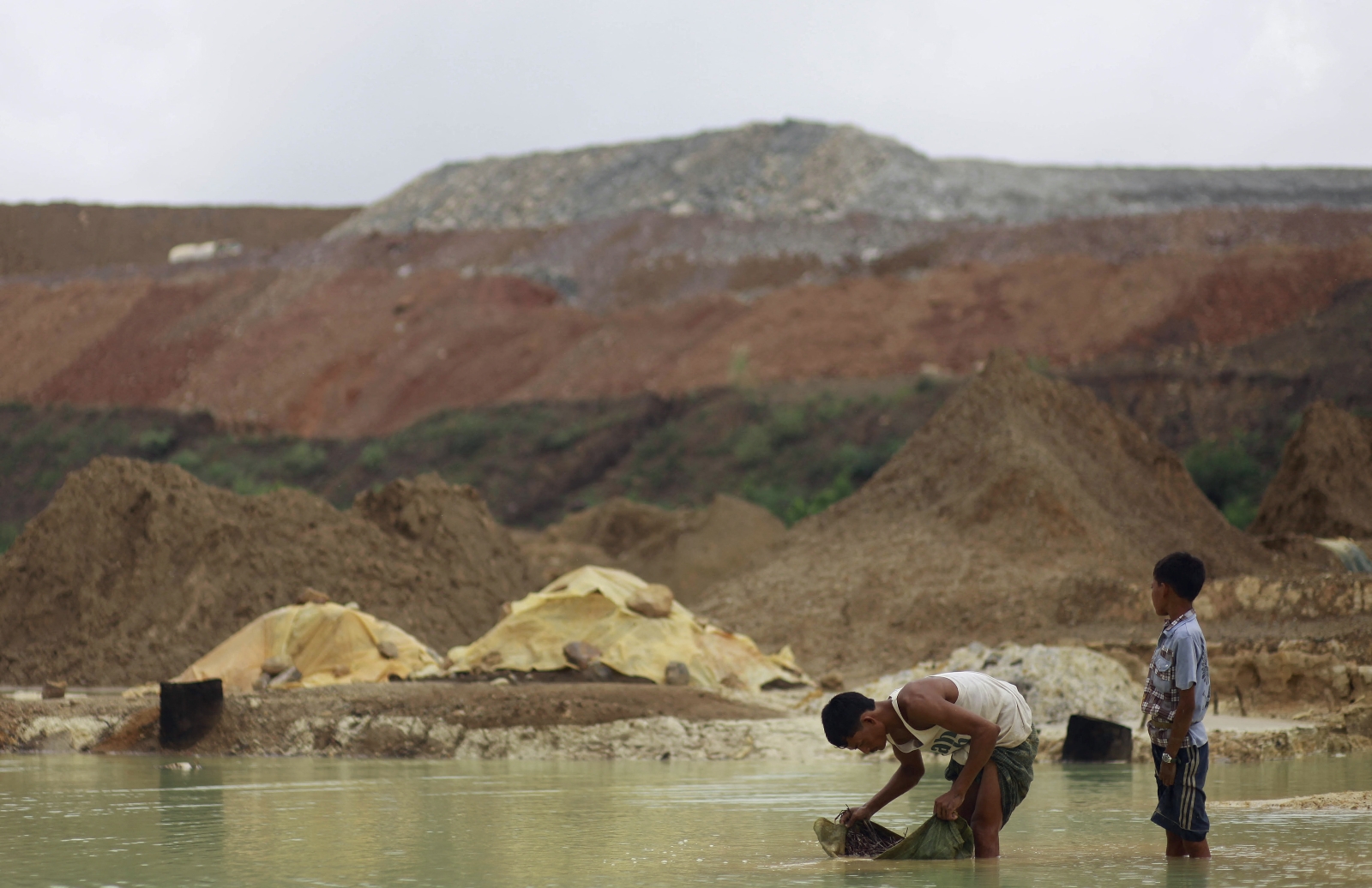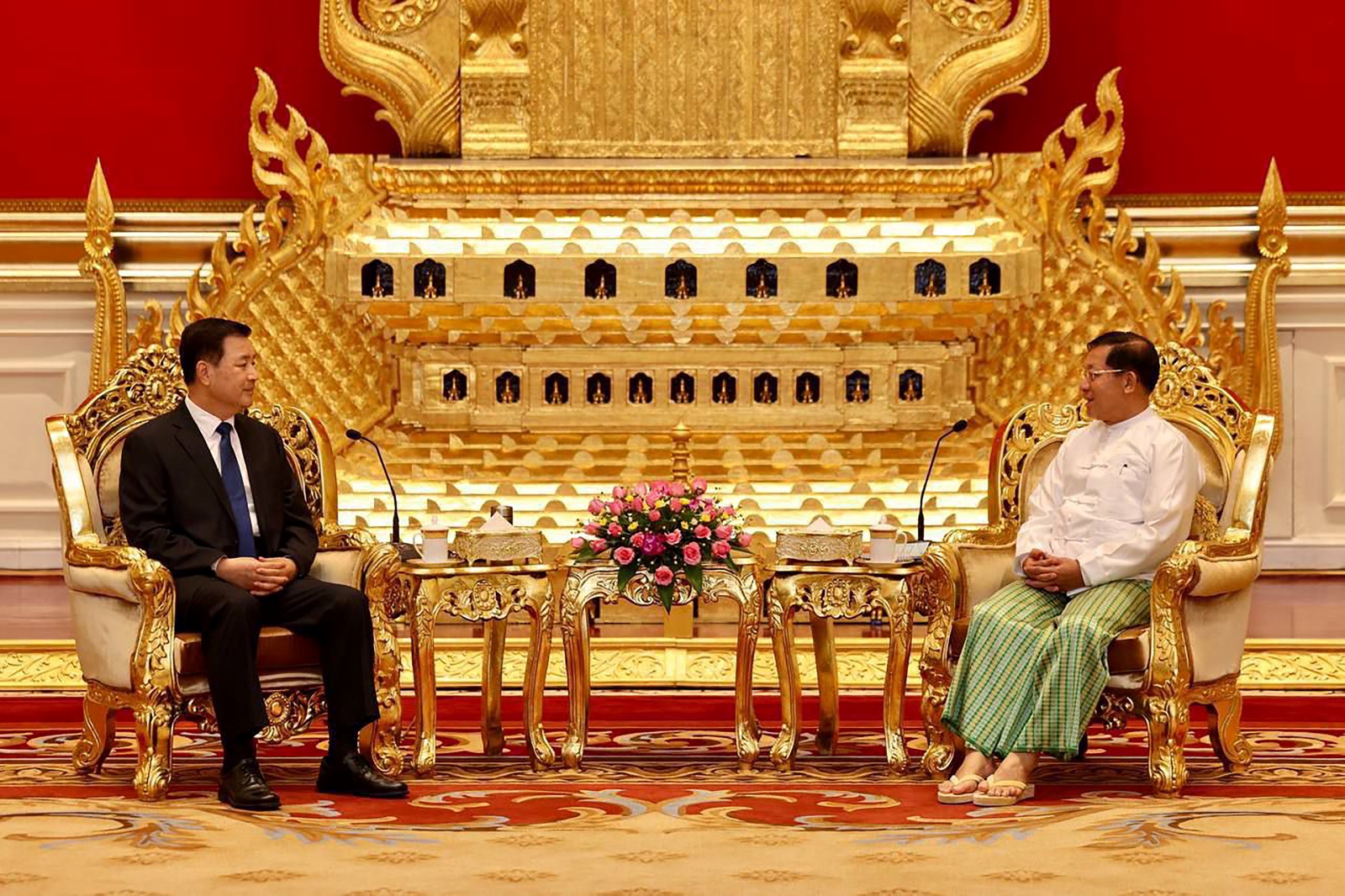Despite perceptions that it will bring a rush of Chinese financing for massive infrastructure projects, implementation of the China Myanmar Economic Corridor has so far been relatively cautious.
By YUN SUN | FRONTIER
MUCH HAS been said and written about the China-Myanmar Economic Corridor since it was formally proposed by China in November 2017 as part of its global Belt and Road Initiative. Despite gaining significant international attention – and generating some uneasiness within Myanmar – the actual approval and implementation of CMEC projects has been incremental, and at a speed far less impressive than the narrative. As a result of friction between China’s massive ambition and Myanmar’s moderate capability, the CMEC is unlikely to end up looking the way many people imagine.
The CMEC is the second economic corridor China has embarked on with a single state under BRI, after the China-Pakistan Economic Corridor, and this reflects its strategic importance in Beijing’s plans. The basic design of CMEC is an upside-down “Y” shape that connects China’s Yunnan Province with Mandalay in central Myanmar, and then stretches southeast down to Yangon and southwest to Myanmar’s Rakhine sState.
Slow progress, little investment
After the initial proposal was made in November 2017, a memorandum of understanding on the CMEC was signed 10 months later, in September 2018. Two rounds of a CMEC Forum have been held, in Guangxi Province in September 2018 and Yunnan Province in February 2019. In December 2018, the Myanmar government established a Steering Committee for Implementation of the BRI in Myanmar led by State Counsellor Daw Aung San Suu Kyi. During the second Belt and Road Forum in Beijing in April, Aung San Suu Kyi allegedly signed agreements related to nine CMEC “early harvest” projects, despite reports that China had proposed more than 30.
Support more independent journalism like this. Sign up to be a Frontier member.
In comparison, the China-Pakistan Economic Corridor has marched forward at a much faster rate. Within two years of the launch of CPEC, Chinese President Xi Jinping had visited Pakistan in 2015 and signed 51 agreements totalling more than $46 billion. As of May, half of the 22 early harvest projects under CPEC were completed and operational, with the other half under construction, according to Chinese Ministry of Foreign Affairs data.
In the five years since CPEC was announced, foreign direct investment to Pakistan increased by 240pc and it has been reported that 17 CPEC projects have brought in tax revenues of US$930 million for Islamabad. Implementation has not been completely smooth: when Pakistani Prime Minister Imran Khan came to office in 2018 he promised a review of CPEC projects. More recently though, Khan has said that completion of CPEC projects is his top priority.
In contrast, Xi is yet to visit Nay Pyi Taw or Yangon, and Myanmar’s investment figures show there has not been a large influx of Chinese foreign direct investment. In the 2017-18 fiscal year, when CMEC was first proposed, approved investment from China was $1.395 billion. However, in the following 12 months, Chinese FDI dropped to $600 million ($304 million during the “transition” period from April 1 to September 30, 2018, and $296 million from October 1, 2018, to April 30, 2019). In the six months to April 2019, China had 72 projects approved – the largest number of any single country – meaning the average size was just $4 million.
The numbers would suggest that although China and Chinese companies are investing in Myanmar, the investment strategy is geared toward smaller projects instead of the mega infrastructure projects with which the BRI is associated. Indeed, this is something that distinguishes Myanmar from other BRI recipient countries: since the launch of the CMEC, there have been almost no major infrastructure projects announced publicly. They may come, but for the most part they are not here yet.
A few steps forward
The most notable project under CMEC to date has been the Muse-Mandalay railway project, a renewed effort by China to build a standard-gauge rail line from Yunnan through Myanmar. Connecting the eastern and western sides of Myanmar has long been a Chinese aspiration, and was a component of the Pan-Asia railway network it proposed for mainland Southeast Asia.
Despite the enthusiasm China has expressed about the railway project for more than a decade, implementation has not always been smooth. The previous incarnation of the Muse-Mandalay railway project was aborted in 2014, after three years of failing to reach agreement on the size and interest rate of loans from China. China Railway Group was only able to sign a MoU to conduct feasibility studies with Myanmar’s Ministry of Transport and Communications in October 2018. The study was completed in April.
If the Myanmar side accepts the project is feasible, it would represent the first step towards what is likely to be a long negotiation process over the design, implementation, financing and procurement of the project. Unless there are some dramatic changes in approach, actual implementation of the railway project is unlikely to transpire in the next few years.
One component of the CMEC that has made moderate progress is the three border economic cooperation zones at Kanpiketee-Houqiao in Kachin State, and Muse-Ruili and Chinshwehaw-Mengding in northern Shan State.
At almost $6 billion a year, the trade volume through the Muse gate is 10 times higher than that of Chinshwehaw and 15 times bigger than that of Kanpiketee. Given the fact that Muse has been severely impacted by conflict between ethnic armed groups and the Tatmadaw, Chinshwehaw and Kanpiketee are expected to play a bigger role in future.
While all three gates are in areas controlled by the Myanmar government, it’s hoped that further development in the surrounding area will have a stabilising effect over territory controlled by ethnic armed groups. In a further boost to the Chinshwehaw zone, the Asian Development Bank in April issued a $250 million loan for development on the Chinese side of the border under the guise of the Yunnan Lincang Border Economic Cooperation Zone Development Project.
The project bank
In January, the Myanmar government launched an online “project bank” of priority infrastructure initiatives to streamline planning, decision-making and financing. The project bank is an initial step towards healthier and more efficient infrastructure development in Myanmar.
By centralising infrastructure projects, it aims to facilitate inter-agency coordination and public-private partnership. Public access to information should ensure more stringent checks on each project’s environmental, social and governance impacts. However, during the initial stages, before all the bureaucratic and public processes have been straightened out, it will also be time-consuming for foreign investors. The rules set for the project bank will also apply to CMEC projects, which could well delay implementation further.
The establishment of the project bank is at least partially the result of Myanmar’s experience with the Kyaukphyu deep-sea port. The proposal for a port predates BRI; China’s CITIC won a tender in late 2015 with an initial proposal that included investment of $7.2 billion, with CITIC holding 85 percent. Kyaukphyu was later rebranded a BRI and CMEC project.
Negotiations over the project have been excruciating, in large part due to Nay Pyi Taw’s concerns about national security implications and concerns of being caught in a debt trap. After three years, the two sides eventually agreed to downsize CITIC’s investment from $7.2 billion to $1.3 billion, with the port scaled back accordingly from 10 to two berths.
Myanmar has said that the downsized version is only the first stage of the port, and two further stages will be built after the first is completed and proven profitable. However, the Chinese have expressed deep scepticism of Nay Pyi Taw’s assurances. Their belief is that a port in Kyaukphyu can only be profitable with economies of scale, and the notion that it could be profitable with just two berths is either dishonest or delusional.
The Chinese feel particularly betrayed by the fact that the Myanmar government turned to the United States government for technical assistance on the downsizing of the Kyaukphyu deep-sea port. Potential US involvement in the assessment of other CMEC projects is likely to have a negative effect on Chinese interests. For the Chinese, Myanmar is not an easy place to invest due to complicated perceptions of China. To add the involvement of another foreign country with a pre-existing bias towards BRI is unlikely to make it any easier.
A model for development?
For the Chinese, investing in Myanmar is not easy. The traditional Chinese approach to major infrastructure projects – the provision of Chinese loans and contracts for Chinese companies – faces many obstacles in Myanmar. These obstacles include the bureaucratic setups and public scrutiny to which all foreign investment is subject to, as well as deeply entrenched historical factors and emotional reactions, and long-lasting perceptions and suspicions that are unique to Chinese investment.
Contrary to the common perception that CMEC will bring in massive Chinese financing for infrastructure, the level of investment, the lack of major projects and the incremental nature of project negotiations all suggest that CMEC (either willingly or reluctantly for the Chinese) represents a different type of BRI campaign – one that is based on genuine mutual consultation and Chinese adaptation.
Reining in Chinese ambitions so they align more closely with Myanmar’s more moderate aspirations and capacity appears to be a key theme of the CMEC. Ironically, perhaps, this scaled-down version – a kind of “BRI-lite” – may not only better serve the goals of Myanmar’s government and people, but also prove to be a model for Chinese-funded development elsewhere.


